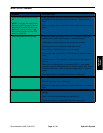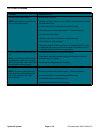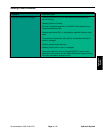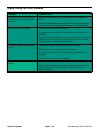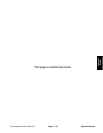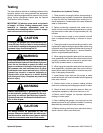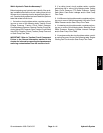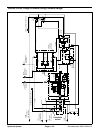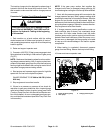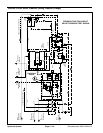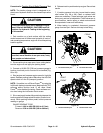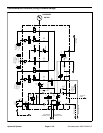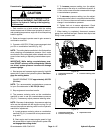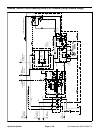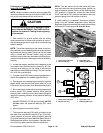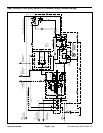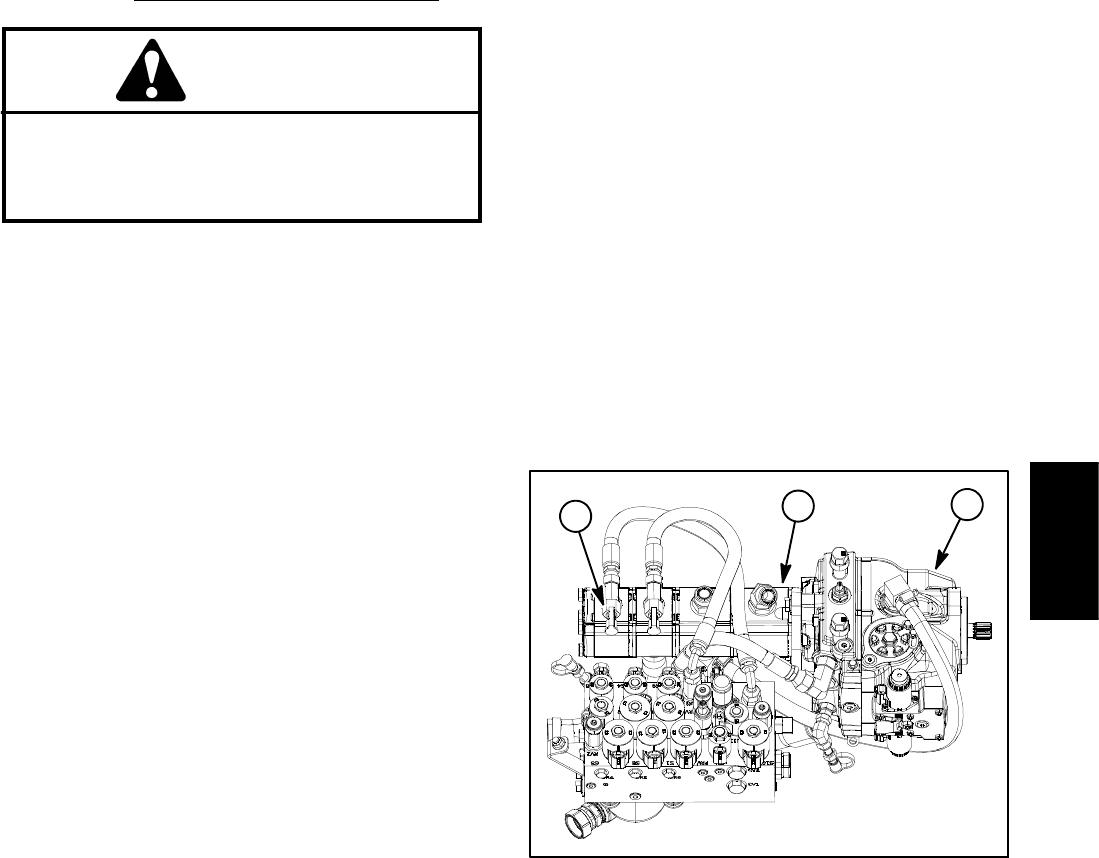
Groundsmaster 4000--D/4010--D Hydraulic SystemPage 4 -- 43
The traction charge circuit is designed to replace loss of
hydraulic fluid from the closed loop traction circuit. This
test is used to make sure that traction charge pressure
is correct.
ProcedureforTraction Circuit Charge Pressure
Test
CAUTION
Prevent personal injury and/or damage to equip-
ment. Read all WARNINGS, CAUTIONS and Pre-
cautions for Hydraulic Testing at the beginning
of this section.
1. Park machine on a level surface with the cutting
decks lowered and off. Make sure hydraulic oil is at nor-
mal operating temperature, engine isoff and theparking
brake is applied.
2. Raise and support operator seat.
3. Connect a 1000 PSI (70 bar) pressure gauge to test
fitting attached to tee fitting in final section of gear pump
(Fig. 27).
NOTE: Makesure that steering wheel isnot turneddur-
ing charge pressure testing. Also, if engine coolant tem-
peratureis elevated, gearpump flowfrom thefinalpump
section might be directed to the cooling fan motor which
may affect charge pressure testing results.
4. Start engine and increase engine speed to high idle
speed with no load on the hydraulic system.
GAUGE READING TO BE 200 to 300 PSI (13.8 to
20.6 bar).
5. Stop engine and record test results.
6. If there is no pressure or pressure is low, check for
restriction in gear pump intake line. Also, inspect charge
relief valve located in piston (traction) pump (see Piston
(Traction) Pump Servicein theService andRepairssec-
tion ofthis chapter).A wornor damagedgear pumpsec-
tioncouldalsobeconsidered(seeGearPumpFlowTest
in this section).
NOTE: If the gear pump section that supplies the
charge circuit is worn or damaged, charge, steering, lift/
lowerand enginecooling fancircuitsmay allbeaffected.
7. Next, with the pressure gauge still connected to the
charge pressure test port, take a gauge reading while
operating the machine in forward and reverse. Start the
engine and put throttle at high idle speed. Apply the
brakes and push the traction pedal forward while moni-
toring the pressure gauge. Repeat for reverse direction.
Stop engine and record test results.
8. If charge pressure meets specifications under no
load conditions (step 5 above), but consistently drops
more than 15% when under traction load, the piston
(traction) pump and/or traction motor(s) should be sus-
pected of wear and inefficiency. When the pump or mo-
tors are worn or damaged, the charge pump is not able
to keep up with internal leakage in the traction system
components.
9. When testing is completed, disconnect pressure
gauge from test fitting. Secure dust cap to test fitting.
10.Lower and secure operator seat.
1. Piston (traction) pump
2. Gear pump
3. Charge pressure port
Figure 27
1
2
3
Hydraulic
System



